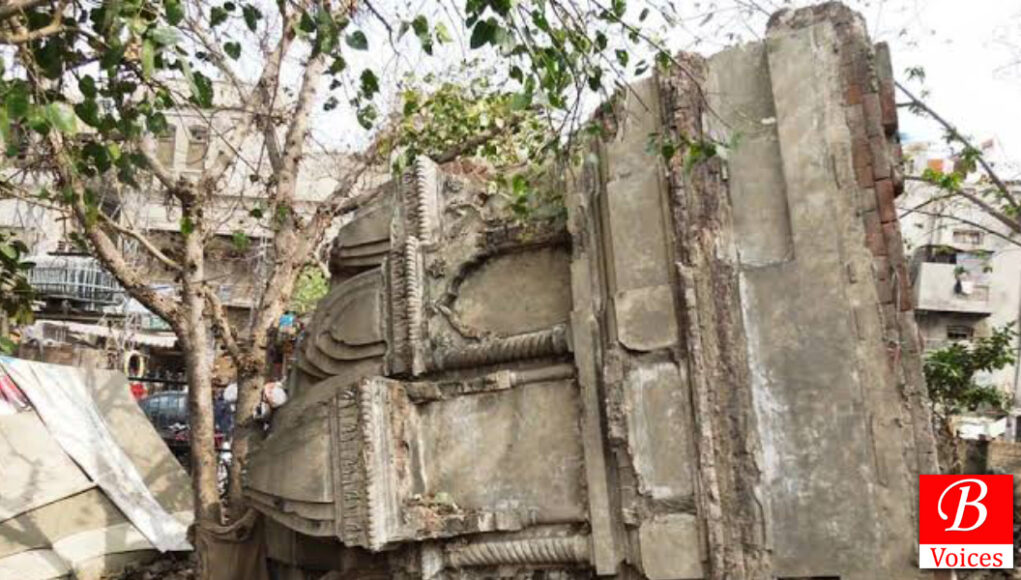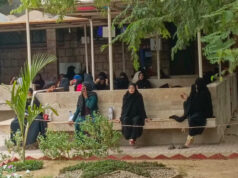Sher Ali
Around 300 Laborers were busy demolishing the Jain Mandir located in the metropolitan city of Punjab province. They did not know its historical importance and the religious sentiments of Jain’s people attached to the temple. In 2016, They were given an order by the government of Punjab to demolish it as the temple was coming in the way of the Orange Line Metro Train project route, despite that Lahore High Court had ordered the government of Punjab to suspend the work on the line within 200 ft of buildings of historical value. But the government of Punjab continued its work and demolished the Jain Mandir.
It was time that the first Mandir was demolished under the patronage of the government to construct an orange train route. In 1992, the same Mandir was demolished by an angry mob consisting of thousands of people in retaliation for the Babri mosque demolition in India. They used bulldozers, hammers, bricks, hands, etc to demolish it. A Hindu leader residing in Lahore said on the condition of anonymity, “They wanted to eliminate any identity of non-Muslims” while glancing at the past. According to him, “the government should have protected such buildings and temples to attract foreigners and to promote religious tourism.”
Now, there is realization and the scenarios are getting changed with the passage of time. It is a dire need of hours to protect religious places of minorities because you have to live with the comity of nations”. He added that it is a fact that the government of Pakistan opened the Kartarpur Corridor to protect minorities. He demanded the restoration of Jain temples and said if demolished mandirs in Islamabad, Sindh, and Rahim Yar Khan could be restored why not Jain Mandir be restored or reconstructed in Lahore. He further added that Lahore is a culturally rich city, tall and cone-shaped Jain Mandir used to attract people and visitors from far away. The restoration of the Mandir will present a soft image of Pakistan in the world. In 2016, the Civil Society in Pakistan showed their concern over the demolition of the Jain Mandir. They had protested to protect historical sites including the Jain Mandir under the United Nations Educational, Scientific, and Cultural Organization (UNESCO) World Heritage Convention. Furthermore, some little parts of Saint Andrew Church, Shalimar Gardens, Budhu ka Awa, tomb of Baba Mauj Daria, Shah Cheragh building were demolished too.
It is pertinent to mention here that in 2016, the opposition leader of the Punjab Assembly, Mian Mehmood Ur Rasheed, now a senior minister in the Punjab Assembly, had demanded an inquiry of the demolition of Jain Mandir. He condemned and said it was the duty of the government to protect the heritage treasure of Lahore. But the then government demolished the Jain temple and constructed the Orange Line Metro Train route.
If the government of Pakistan could have implemented Justice Tasaduq Jilani’s landmark judgment on minorities’ rights, the remains of Jain Madir would have not been demolished. In 2014, the Supreme Court of Pakistan had ordered the government of Pakistan to constitute a National Council for Minorities’ rights in a case in suo-moto action regarding the Peshawar church bomb blast. Furthermore, the Supreme Court of Pakistan said that they found that the incidents of desecration of places could be warded off if the authorities concerned had taken preventive measures at the appropriate time. The court also found that the inaction on the part of law enforcement agencies was on account of the lack of proper understanding of the relevant law.” Court had also directed the federal government of Pakistan to promote religious tolerance in Pakistan. Lack of religious tolerance caused the demolition of the Jain temple in 1992. Additionally, the demolition of remains of the Jain temple was against the spirit of the verdict of the Supreme Court in which the apex court had ordered to protect the places of worship of minorities.
Share your comments!








